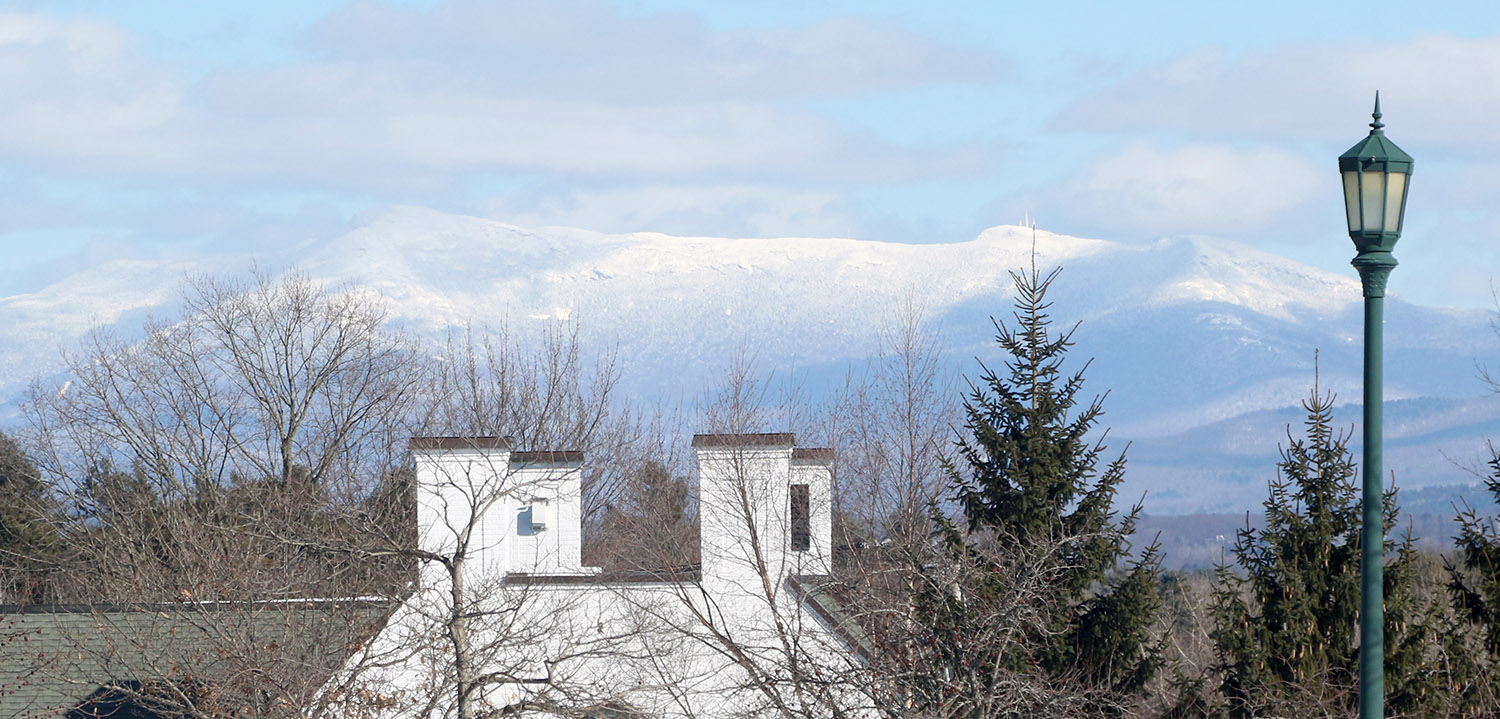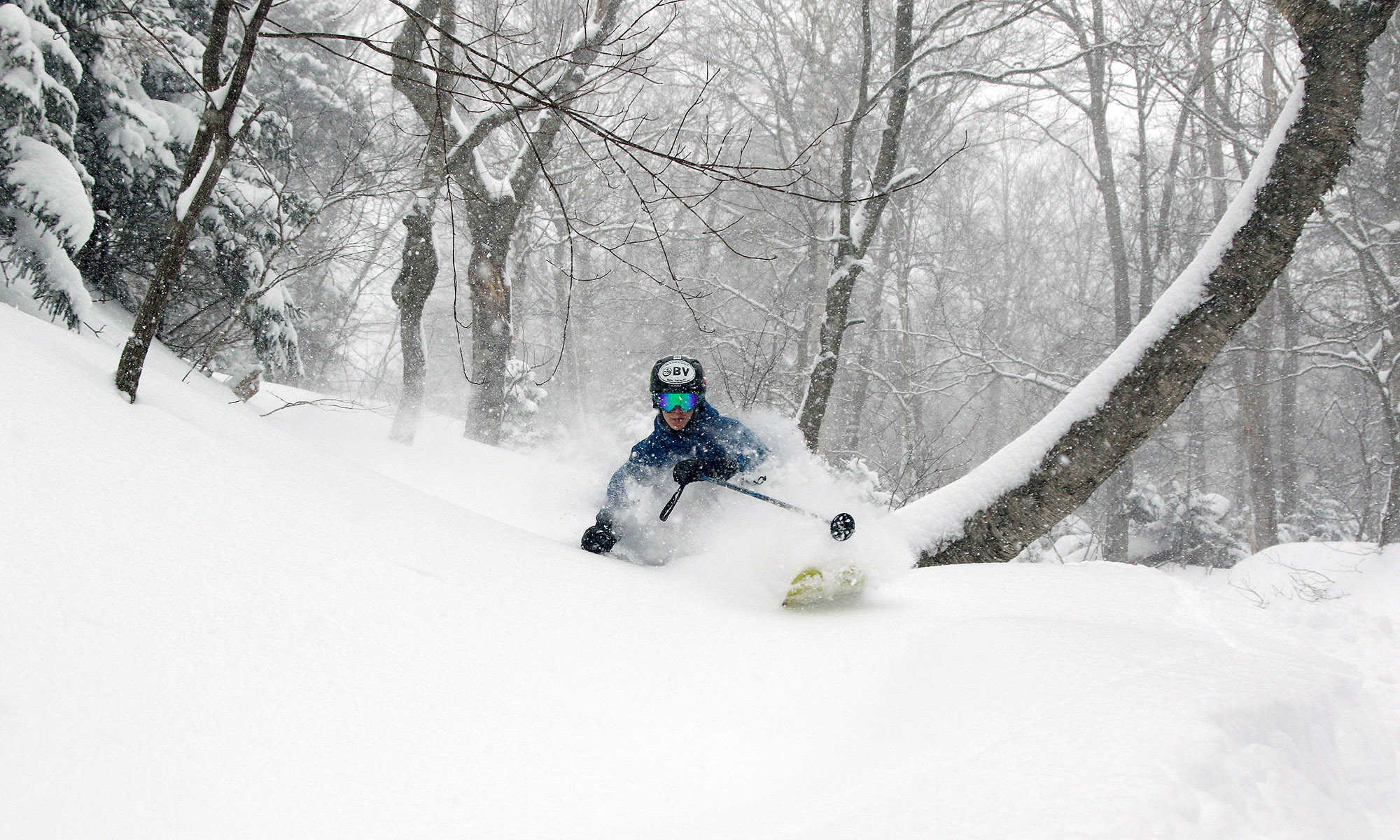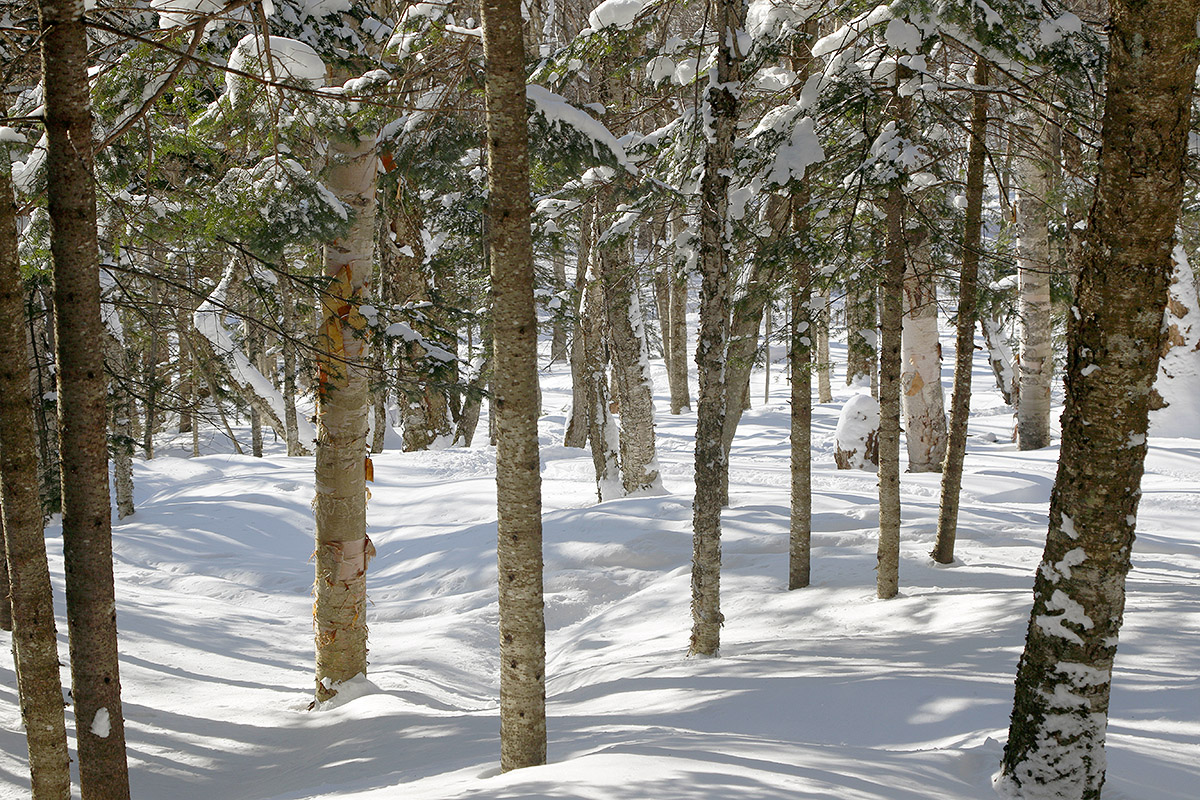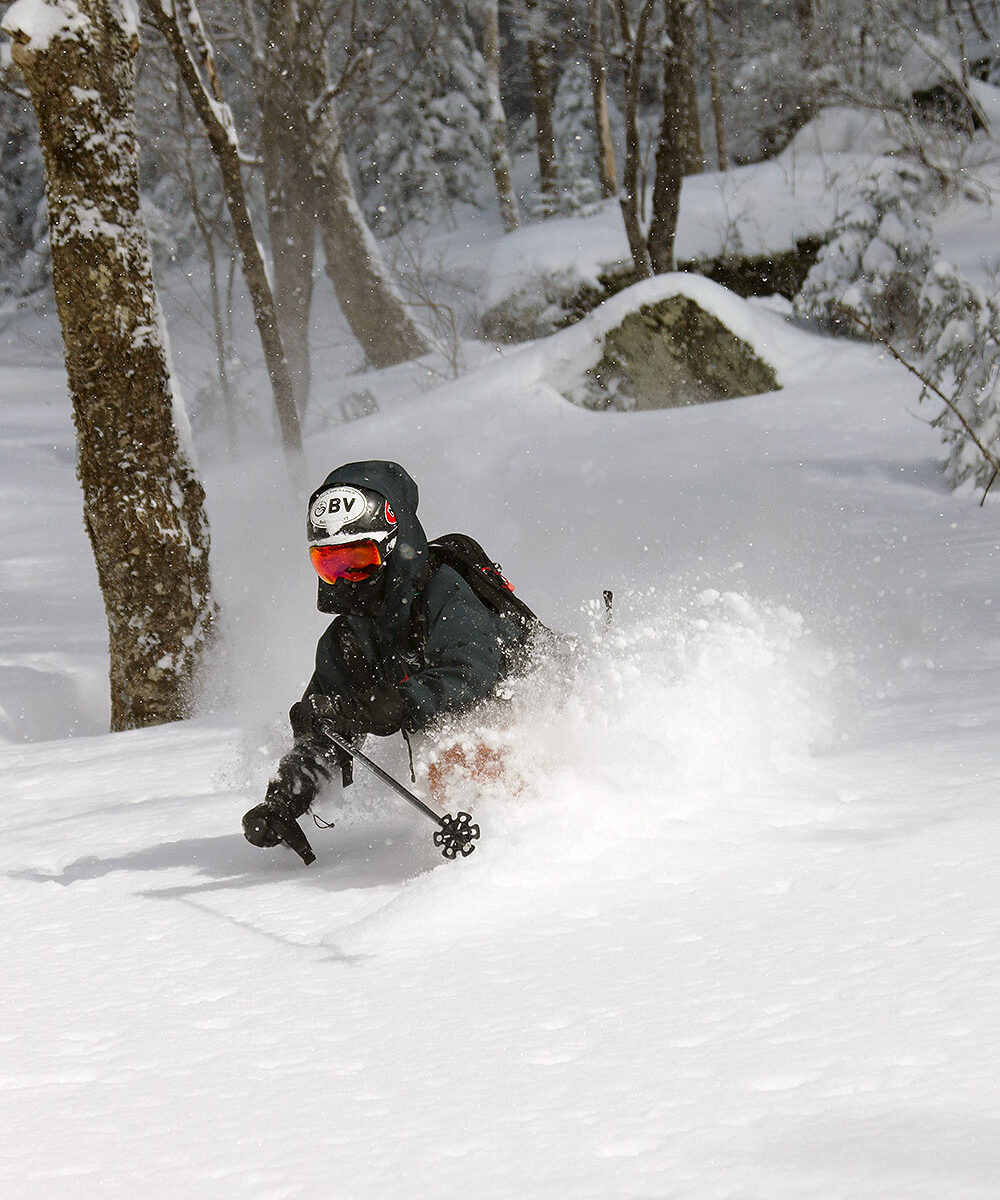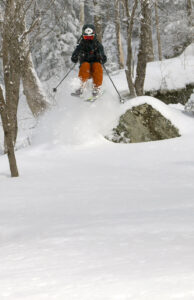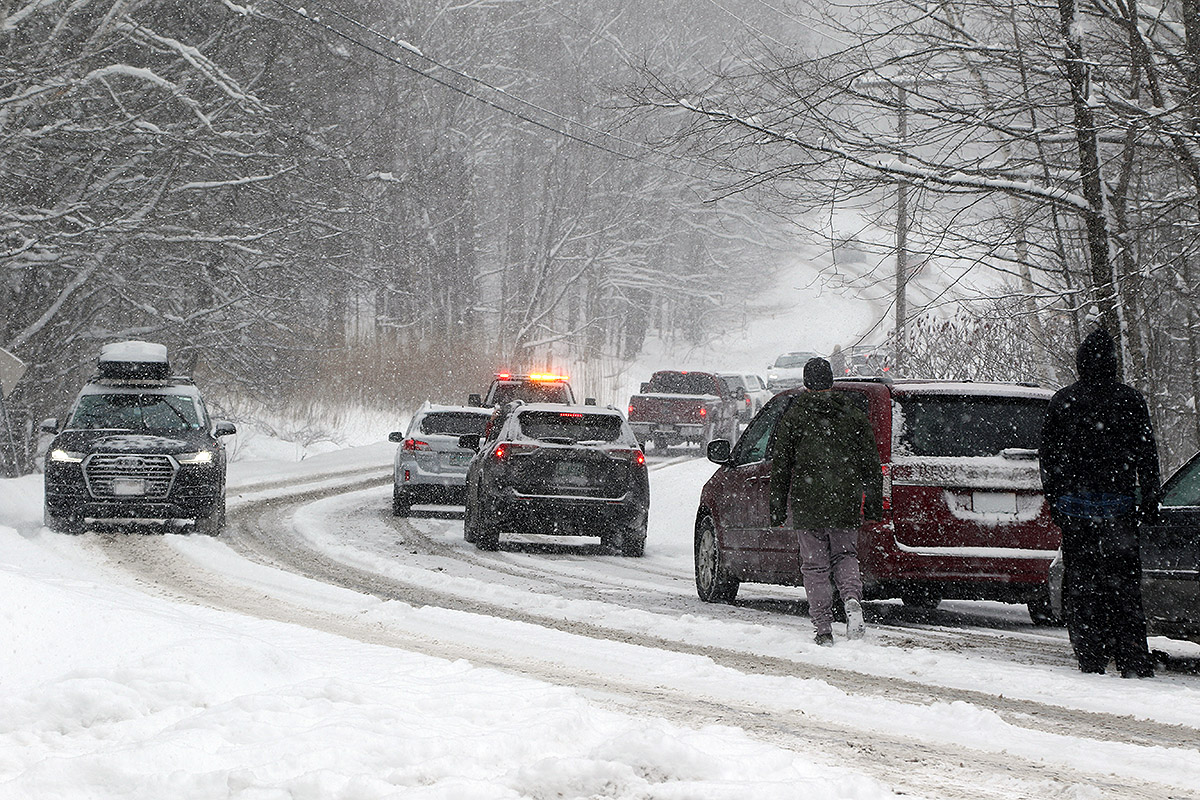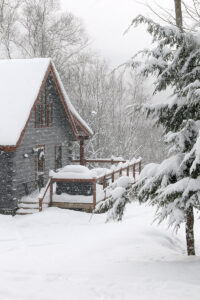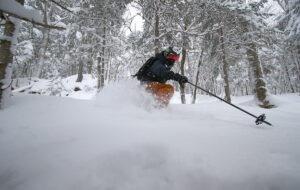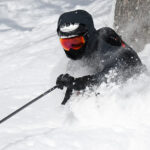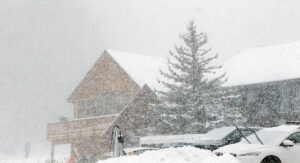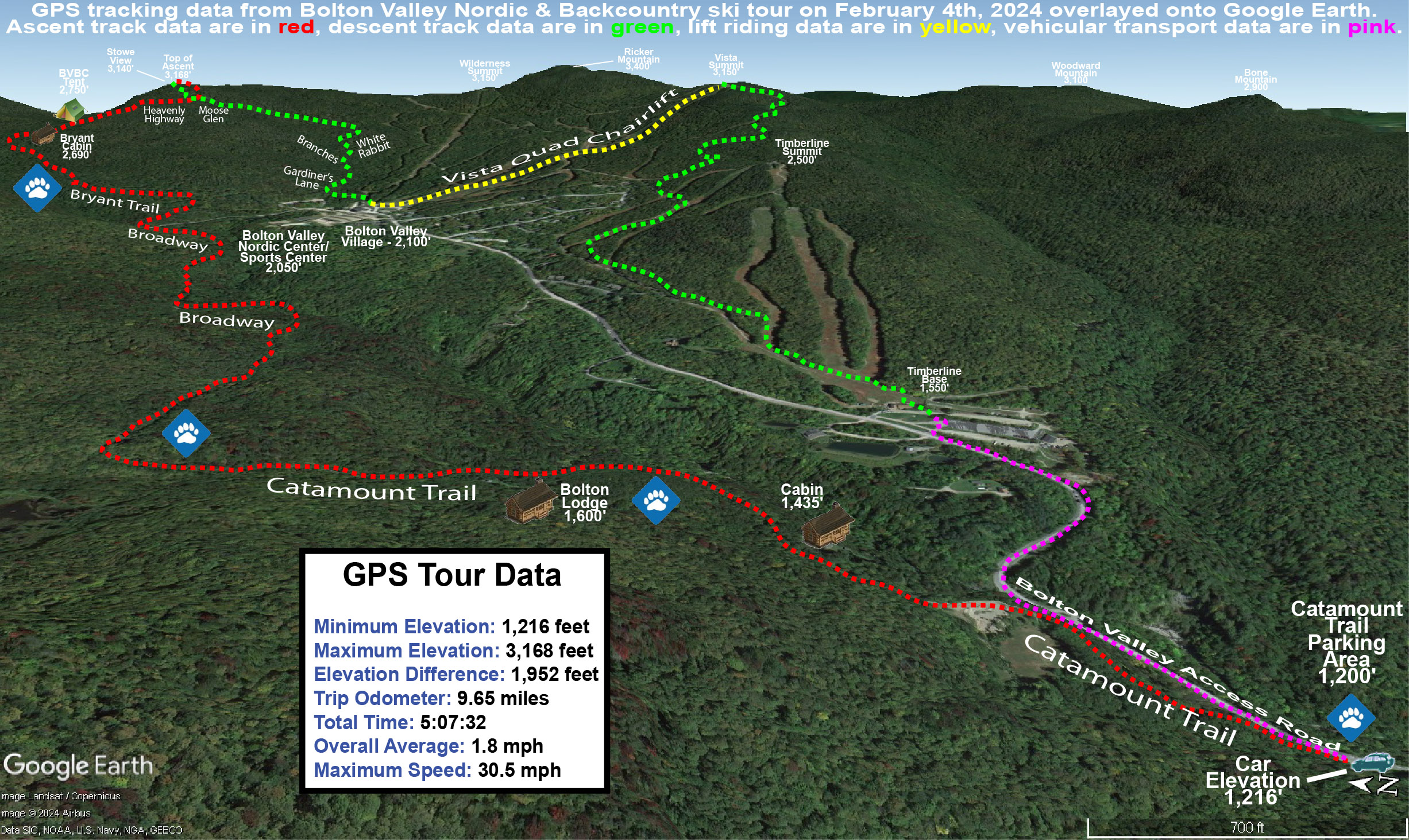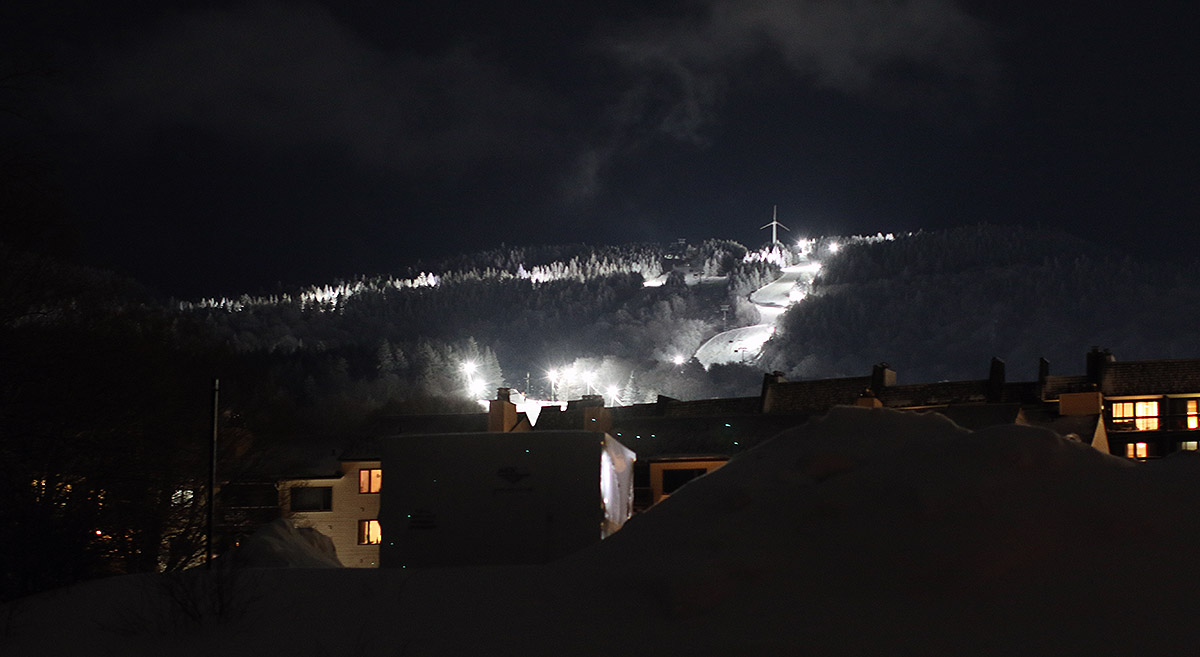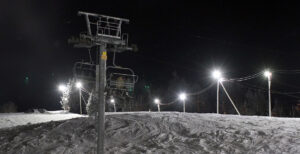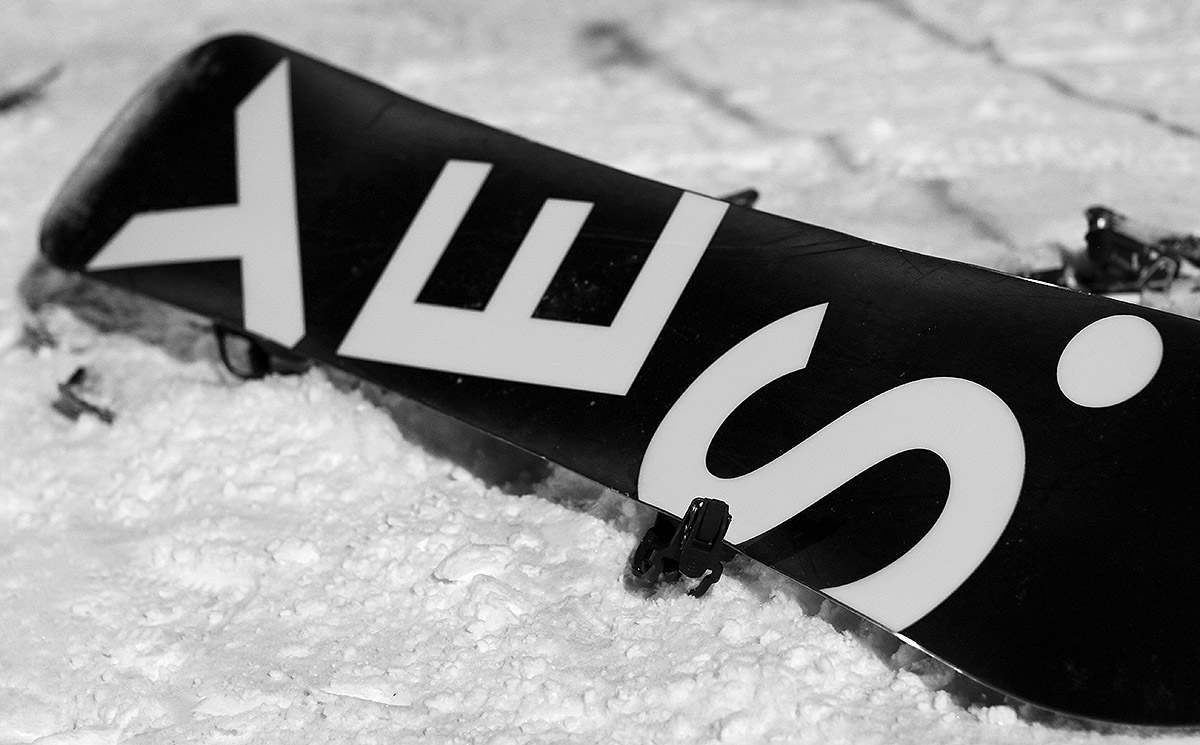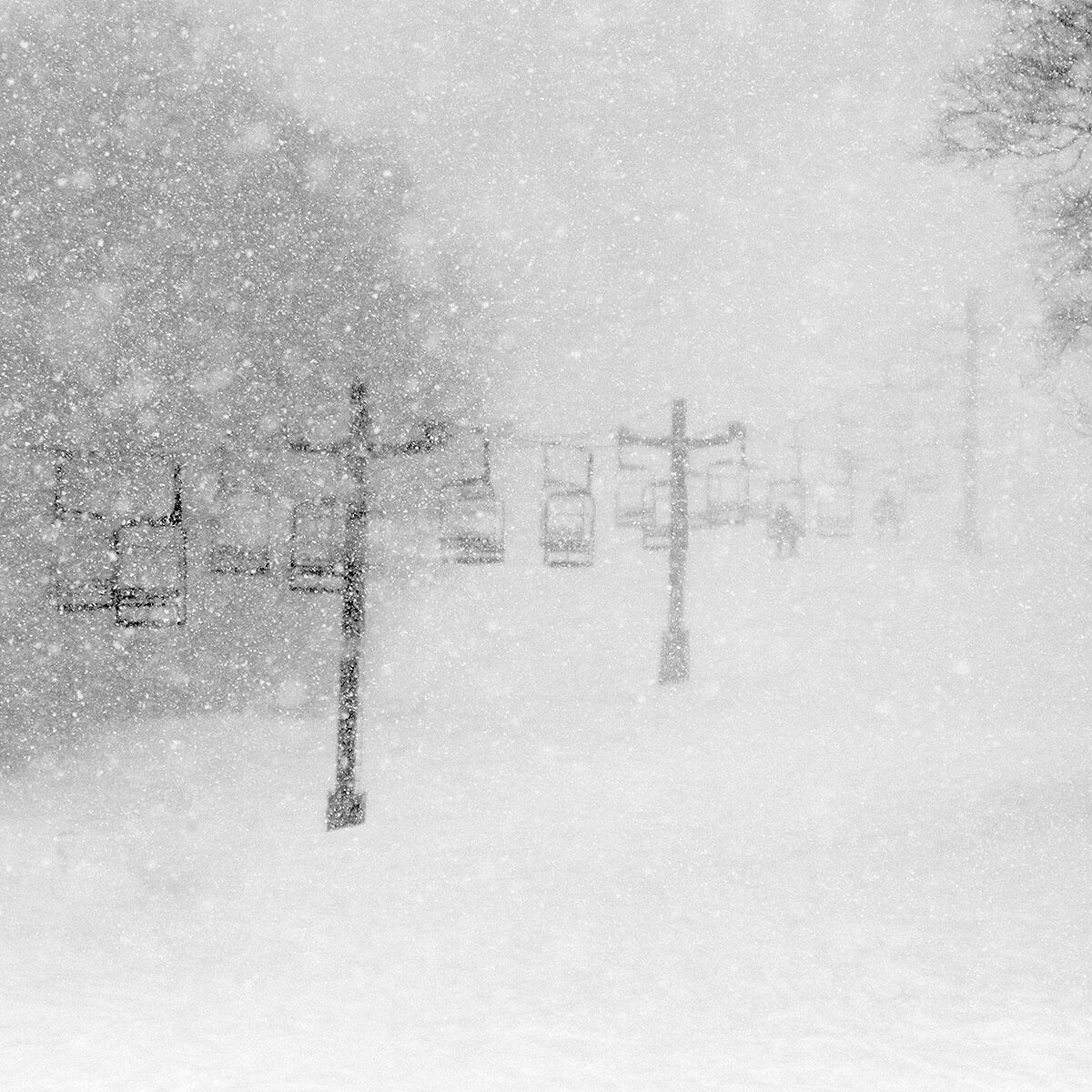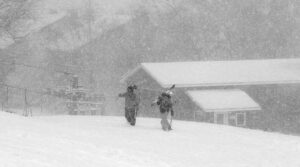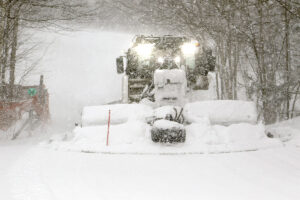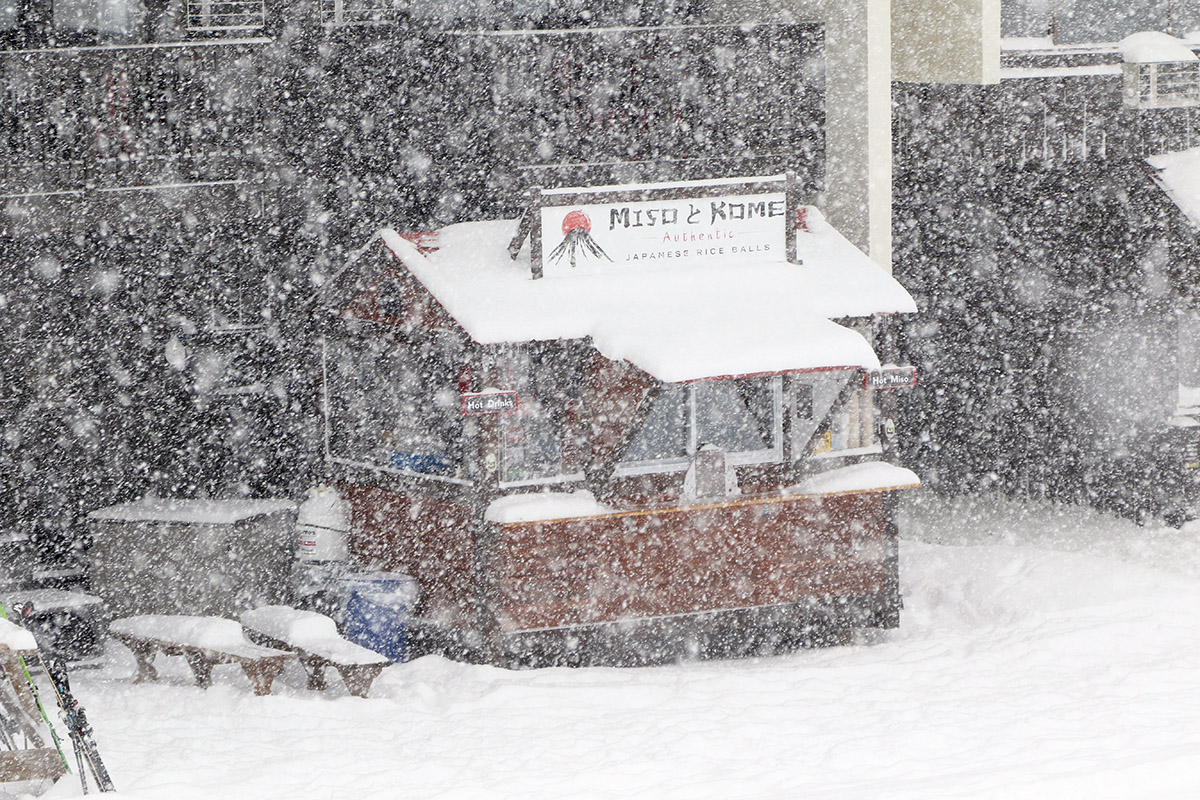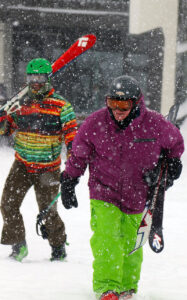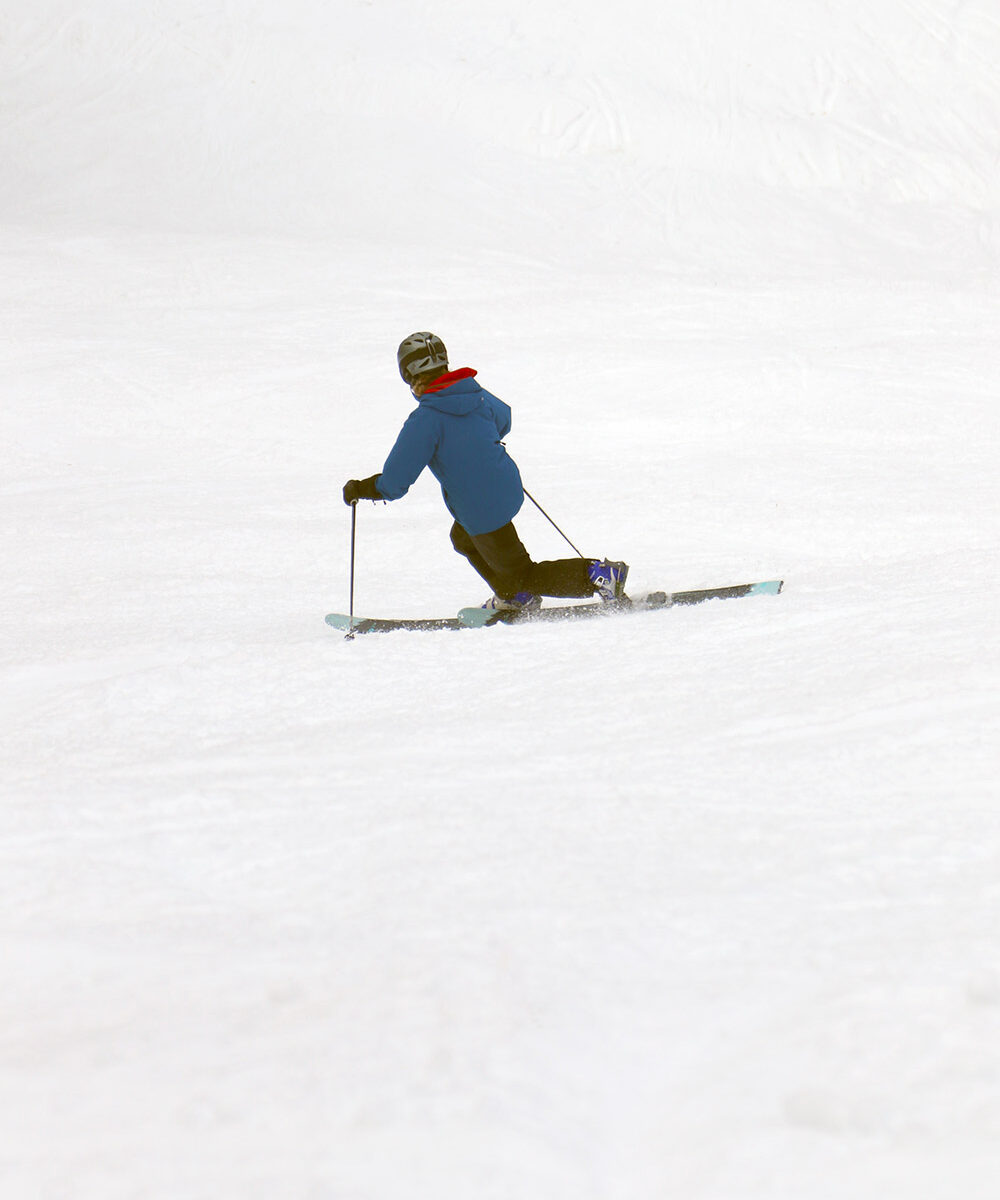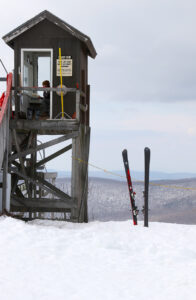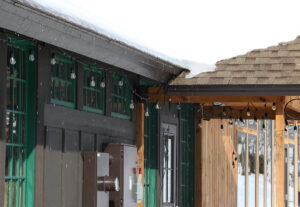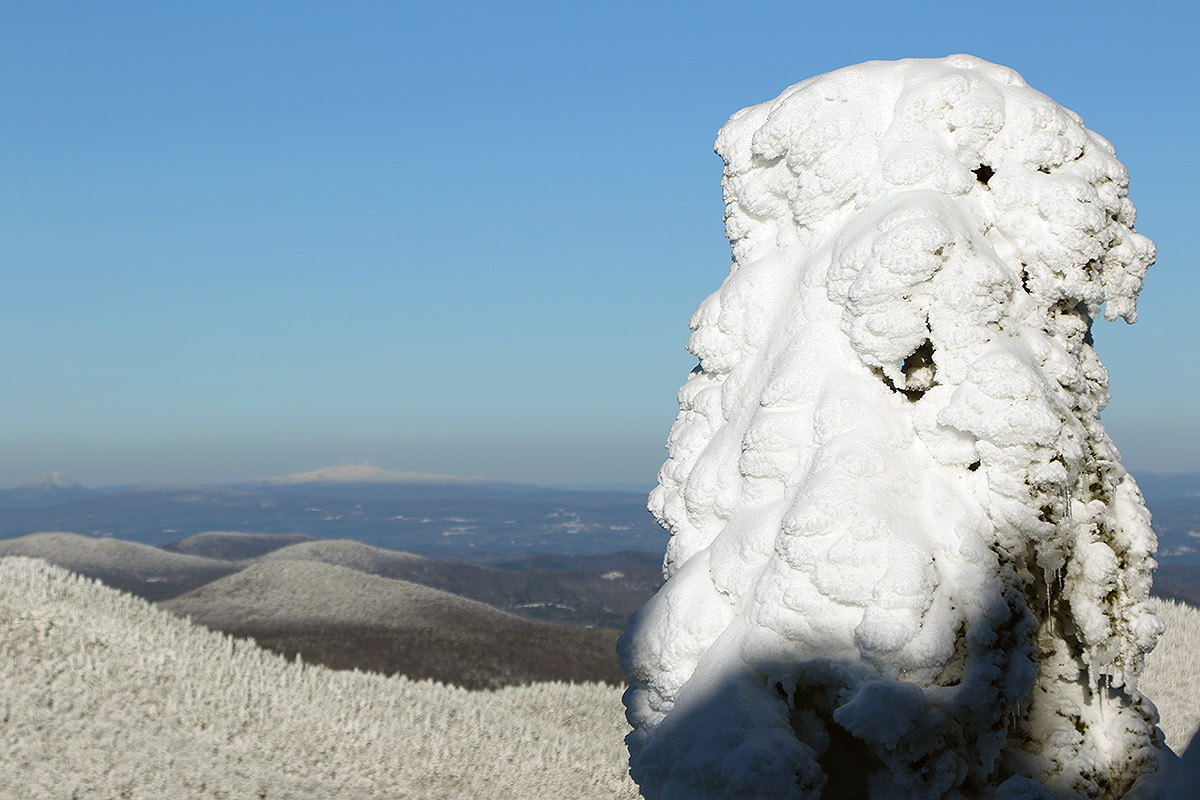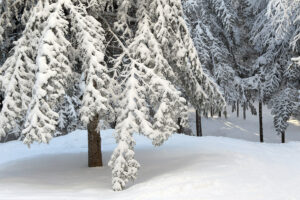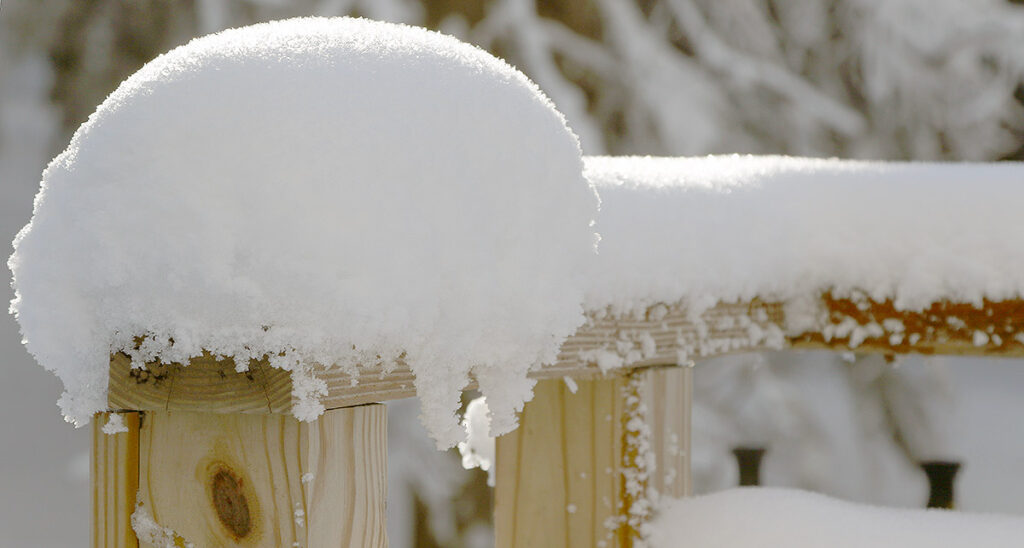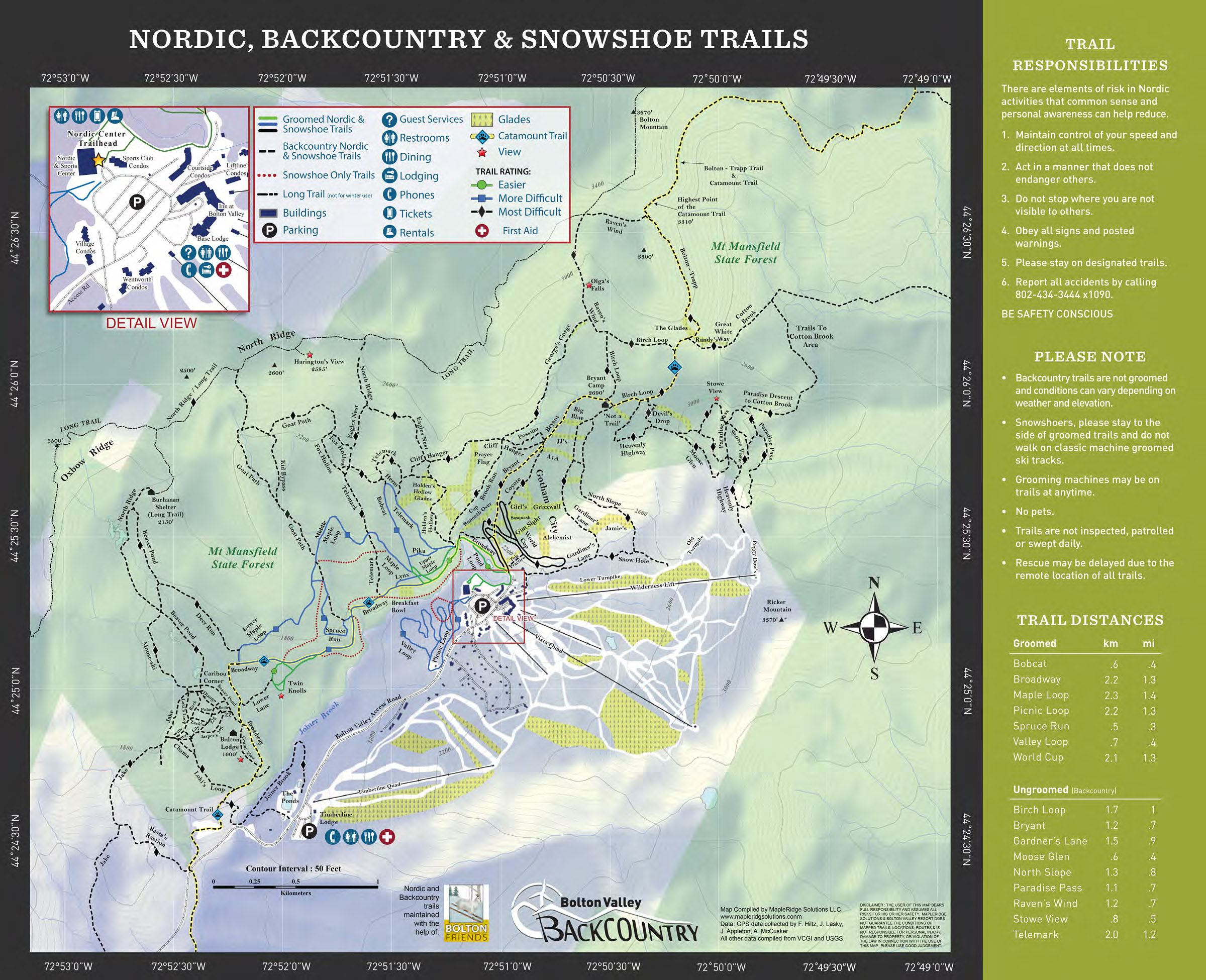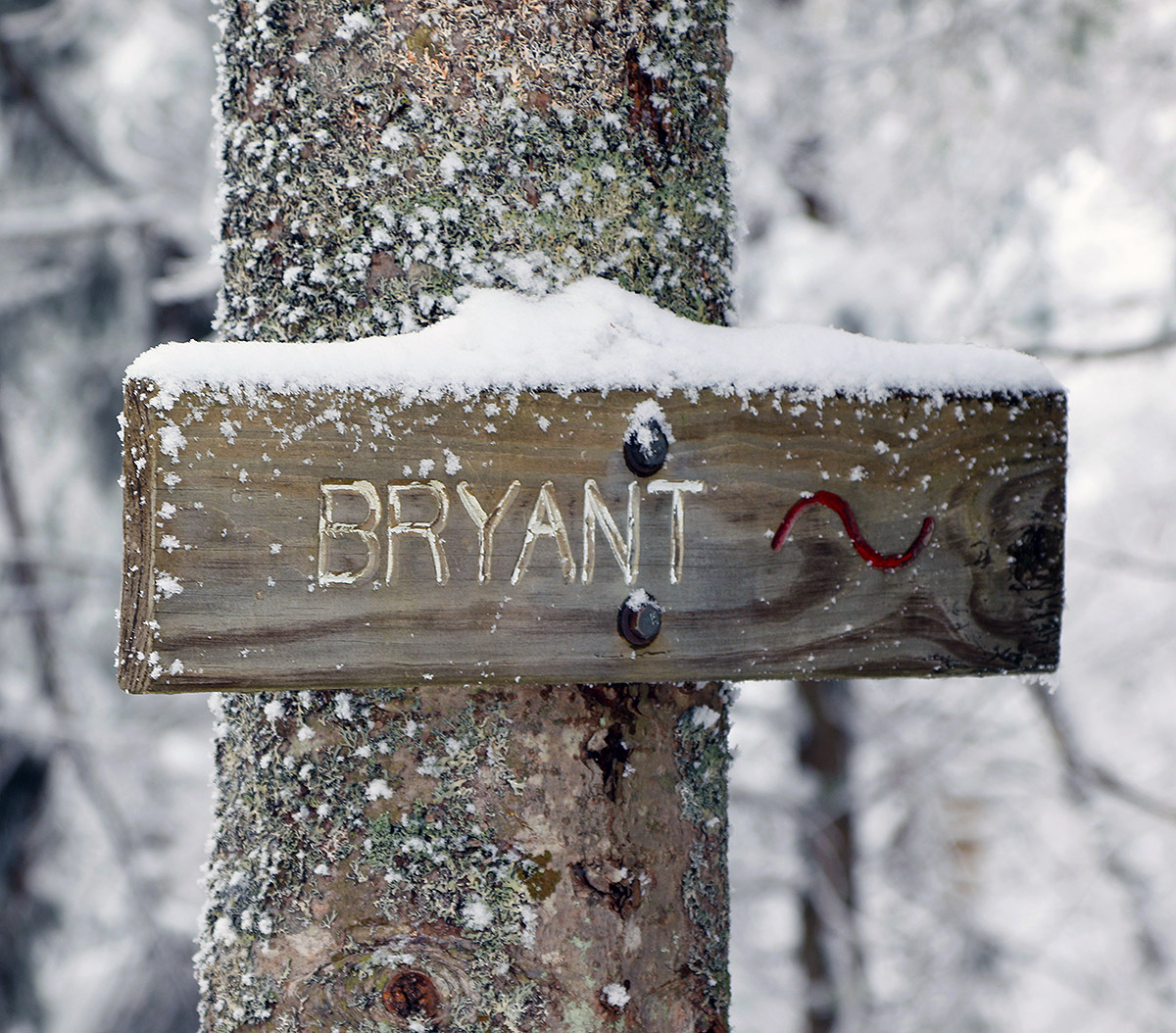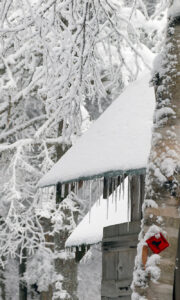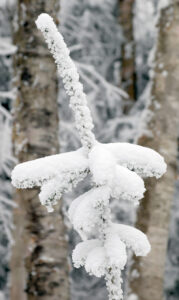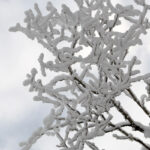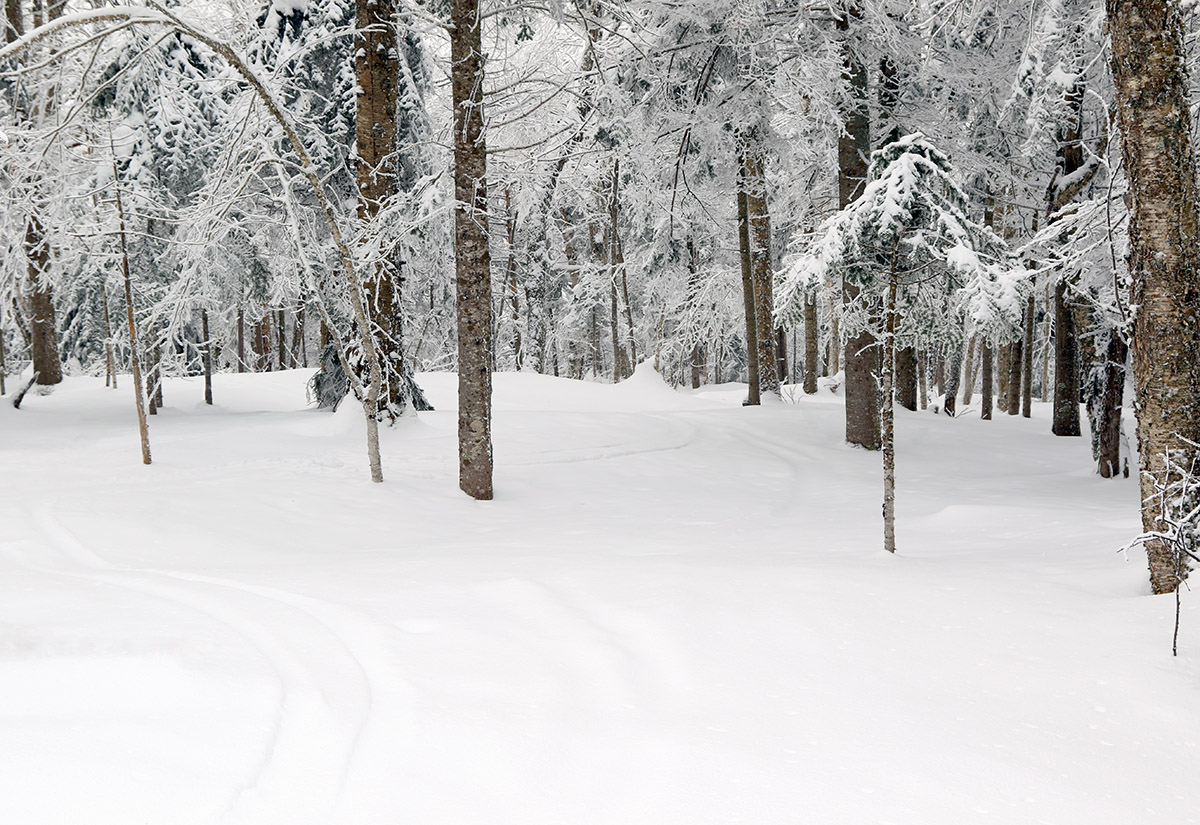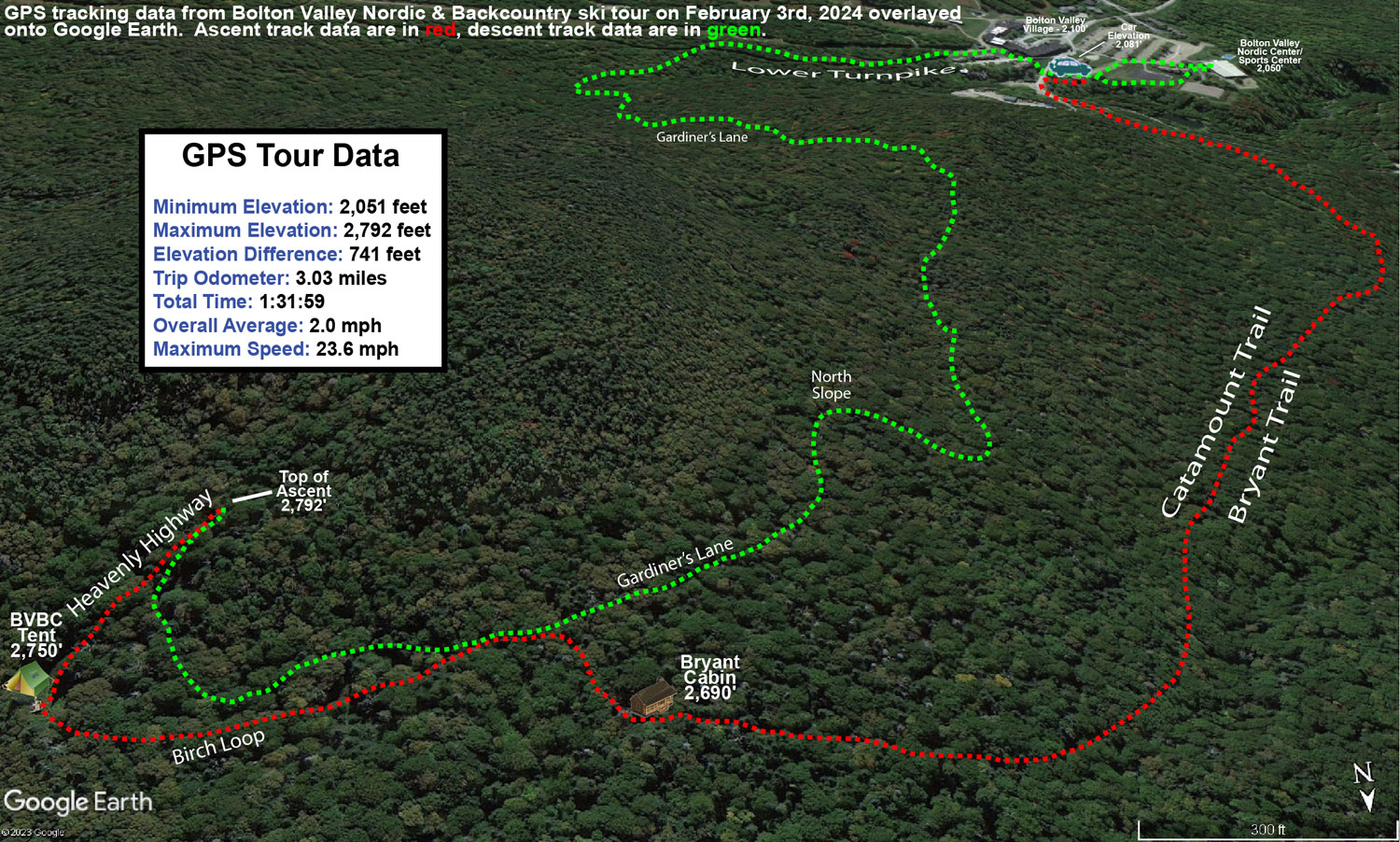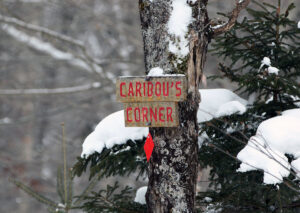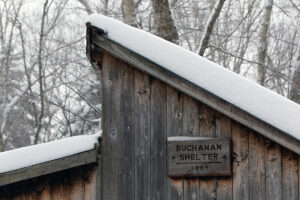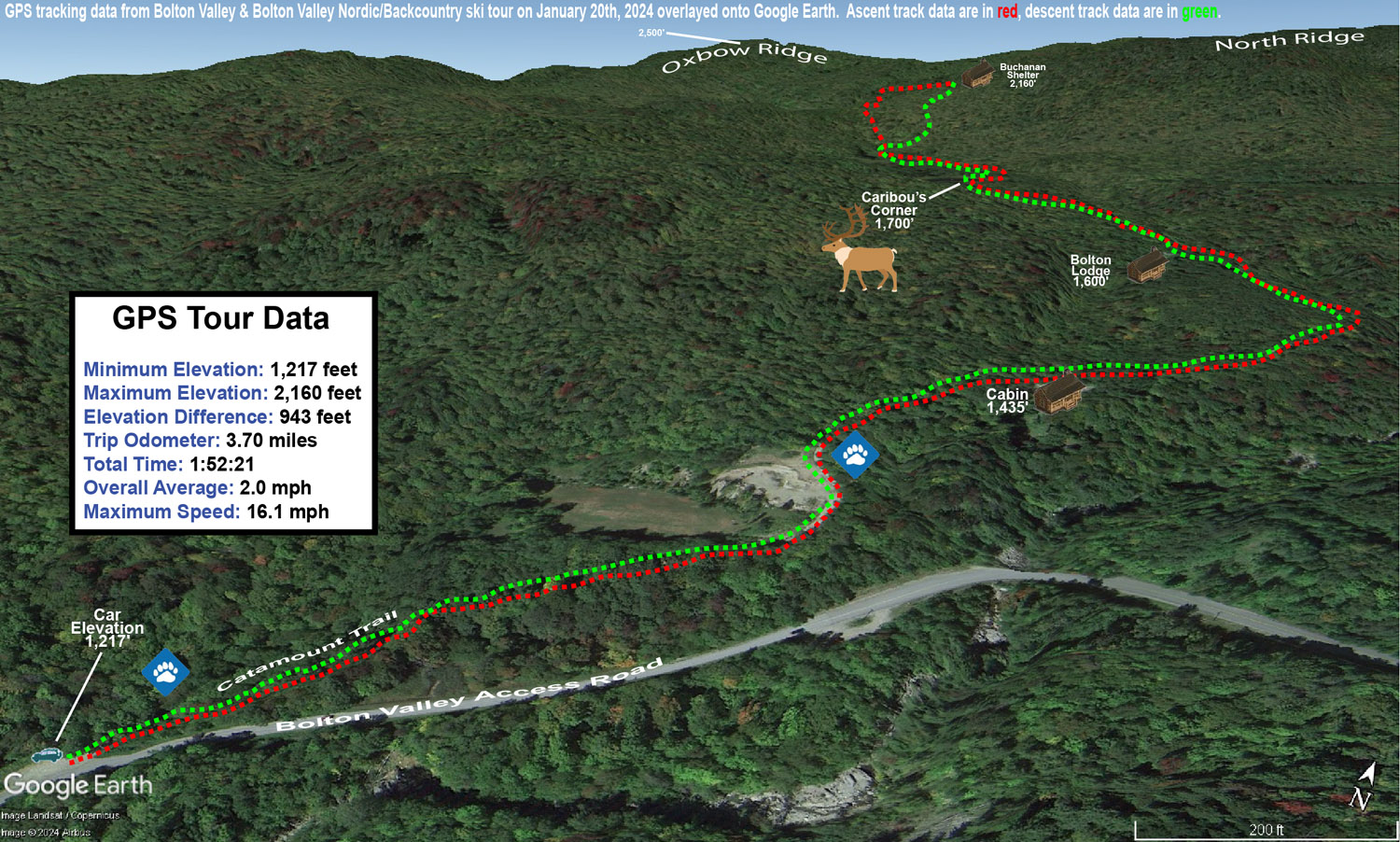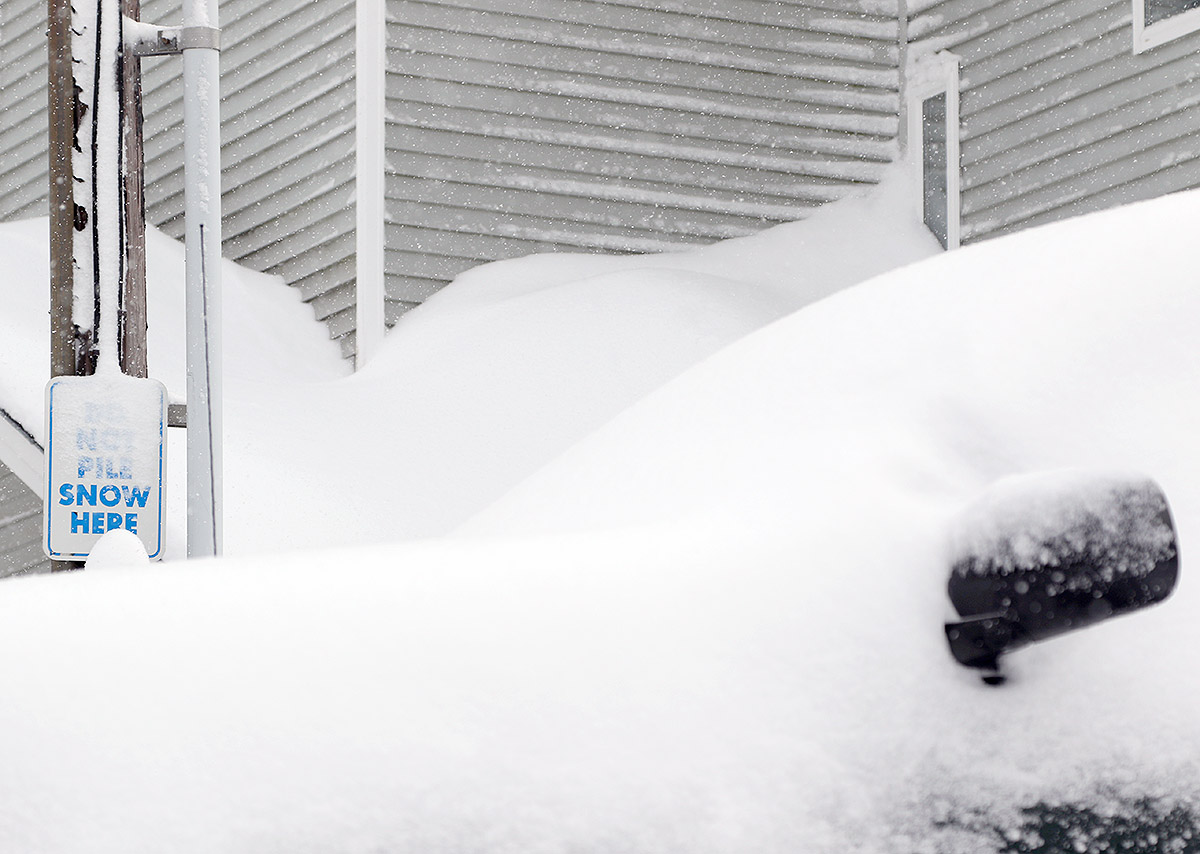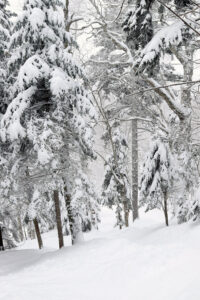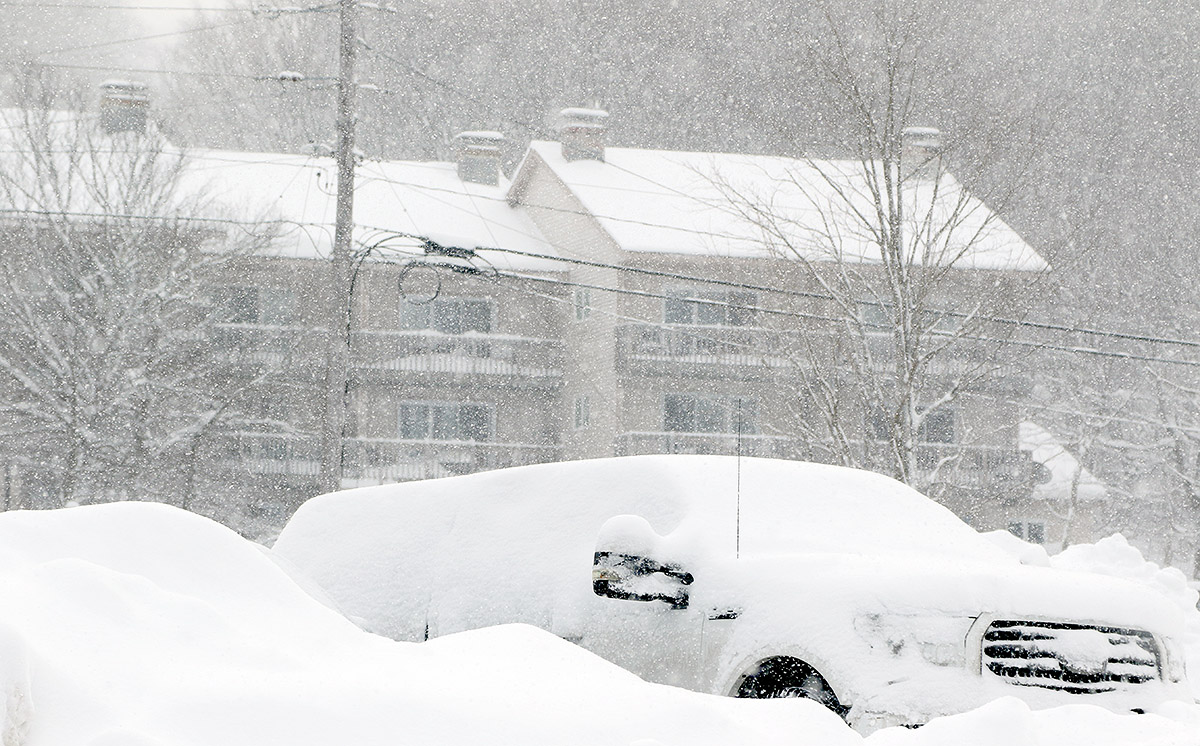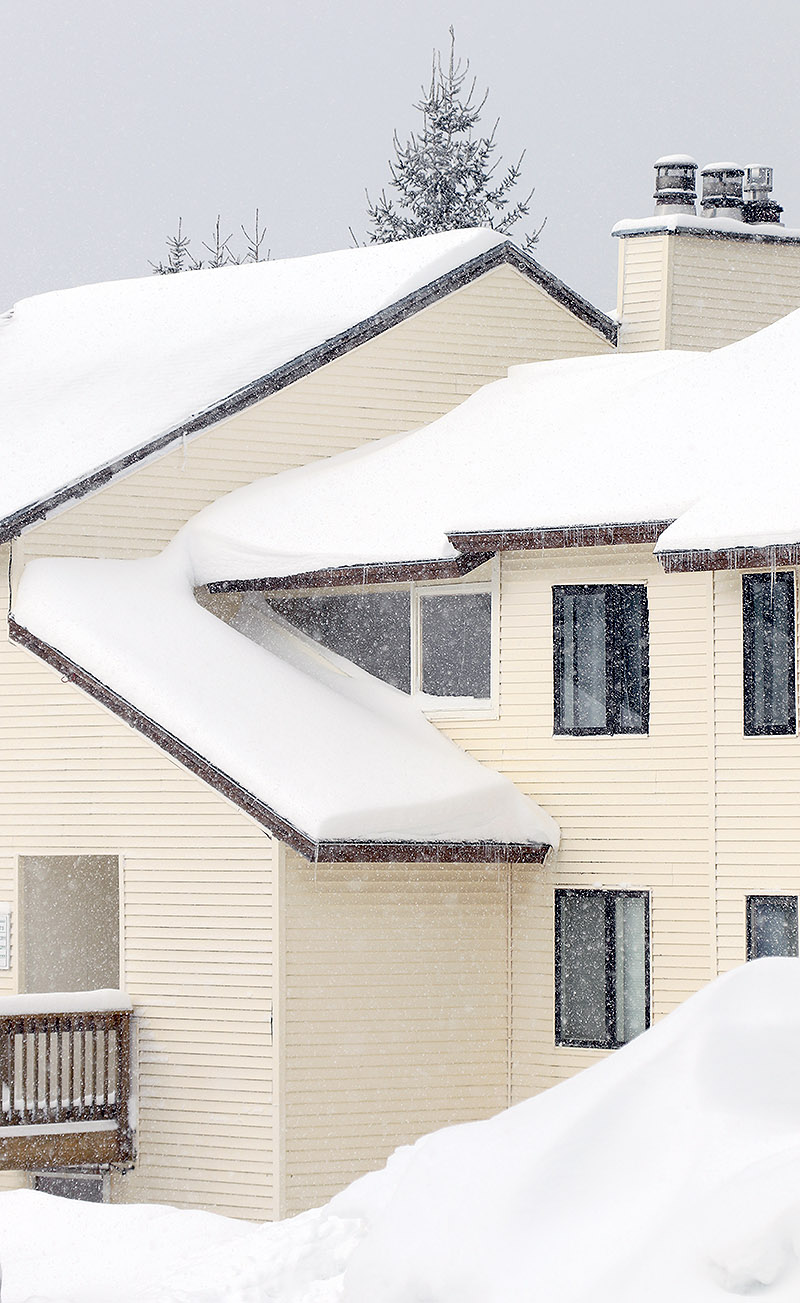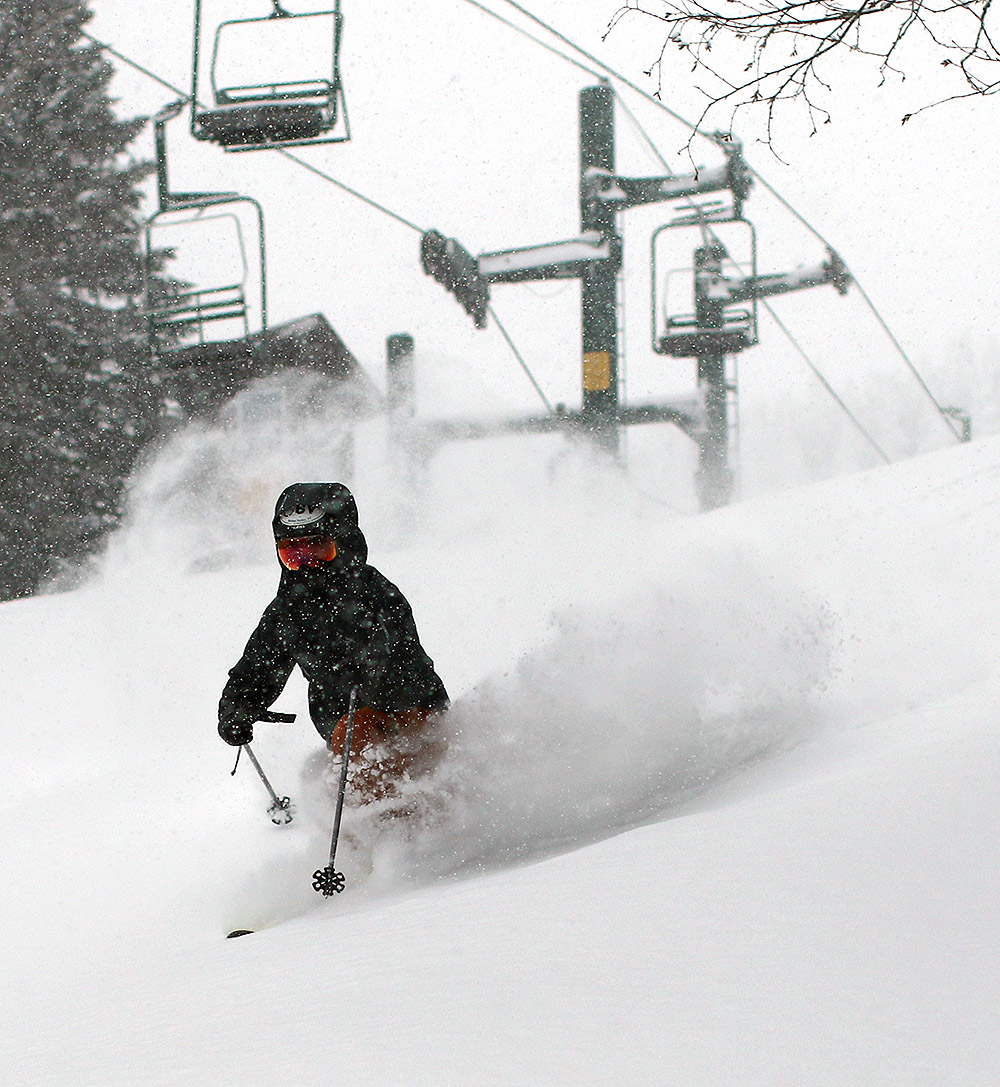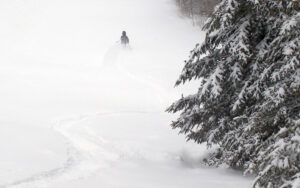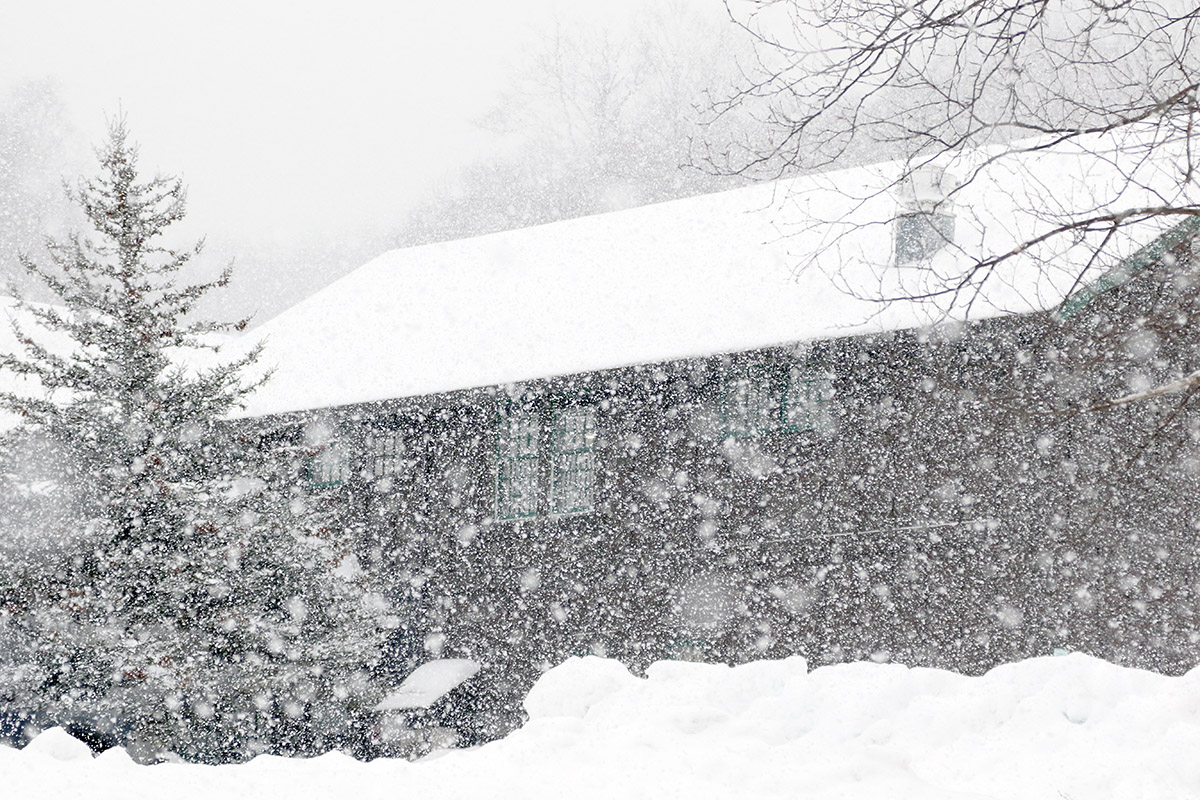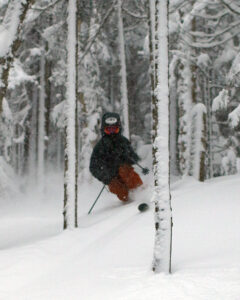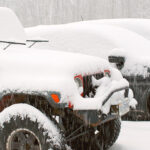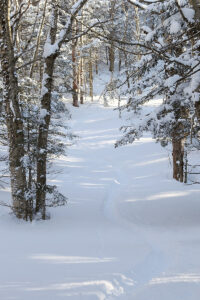
I was too busy to get out for turns yesterday, but I had some time this afternoon and was able to head up to Bolton. Thanks to the arctic front that came through overnight, they picked up another 4-6” of snow, bringing their recent totals to 16” in the last 48 hours and 36” in the past week.
I was definitely interested in checking out the new snow, but between still being in the President’s Day holiday period, temperatures a bit on the chilly side, and the typical consistency of the subsurface I’ve observed in areas with skier traffic, touring on the Nordic and Backcountry Network seemed like the best option. Based on my experience out there today though, issues with the subsurface snow quality are rapidly disappearing. While we’re not typically looking for the champagne powder on the slopes to settle, it eventually does, and in this case the compaction of the lower levels of the surface snow is really starting to pay dividends with respect to the overall quality of the skiing. When we first began to get these latest rounds of fluff, it was just dry powder atop the old firm base. There was no bonding between the old and new snow, and if you weren’t in bottomless snow, you were hitting a very hard subsurface. Whether due to the new overnight snow, the settling of the lower layers in the surface snow, or more likely a combination of both, I noticed a dramatic change in that surface/subsurface interface today. There’s a substantial, denser layer of snow above the subsurface now, and contact with the old subsurface is far less frequent. Even when it comes to very dry powder, if you get enough of it, you will eventually get to the level of a resurfacing, and apparently, snorkel-deep levels of champagne are enough.
In any event, powder turns were absolutely fantastic out there today. With the lower levels of the powder getting crushed into denser snow, in undisturbed areas you’ve got a right-side-up snowpack that is reaching very high quality. The powder is so good that it’s now supporting great turns on low-angle, mid-angle, and even high-angle terrain. The addition of the new snow combined with settling seems to have held powder depths in the range of what I found on Saturday, with probably 12+” at 2,000’ and 17-18” around 3,000’. I’m amazed that the powder still works for low angle terrain with how deep it is, but it’s so dry in the upper layers that it just does – at least on 115 mm fat skis.
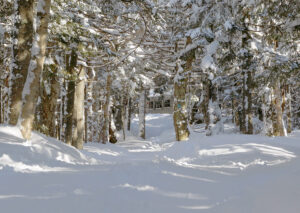
With the powder hitting the depth for even high-angle terrain, I opted for exploring some steeper lines today. On my tour, I started up Heavenly Highway and set in a skin track out toward Devil’s Drop to get in some turns there, and also put in a track to get me out to some of the steeper terrain above North Slope. All the terrain out there is really good right now.
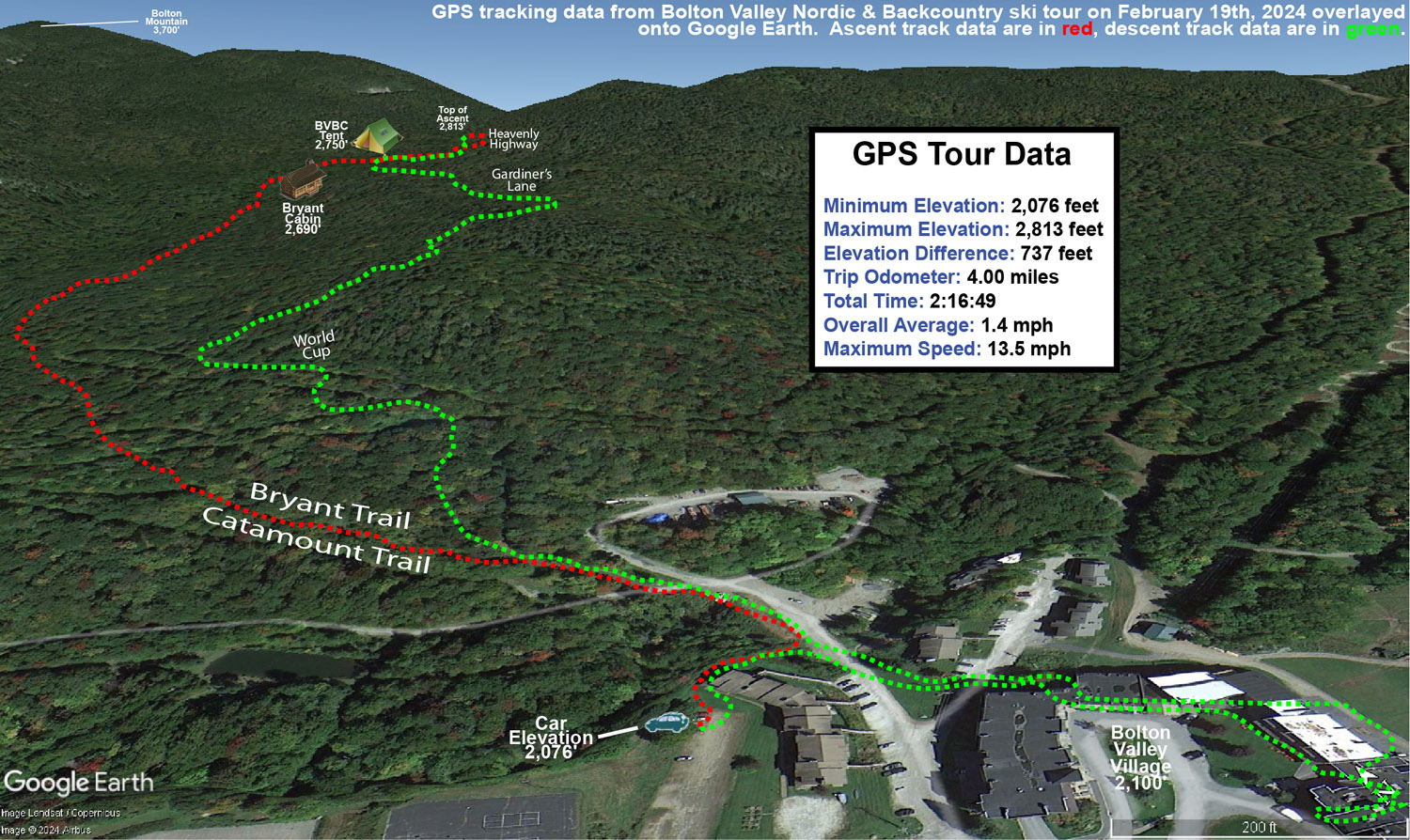
The clouds pulled away today to leave us with a brilliant, sunny, midwinter afternoon. Anyone out there touring in the backcountry was definitely getting a top 10-20% day, and the snow quality should stay great with these cold temperatures, so tomorrow should be just as good. As a bonus, I was surprised to see that despite the holiday weekend, traffic on the Nordic and Backcountry Network has actually been fairly light the past couple of days – I’d say 75% of the glades I saw had in the range of zero to three tracks in them when I was out this afternoon.
